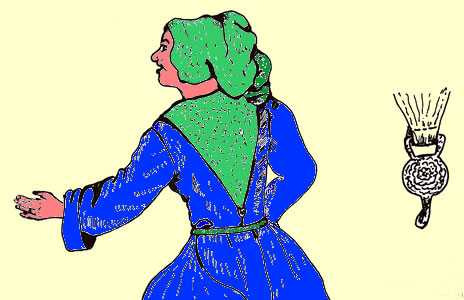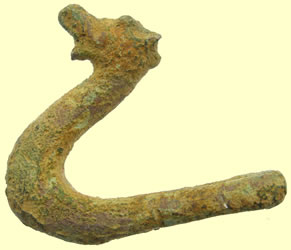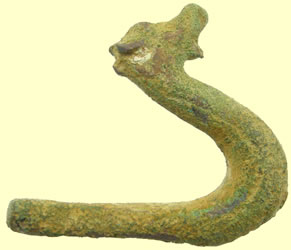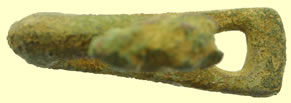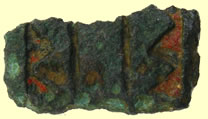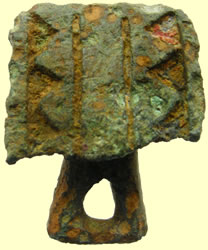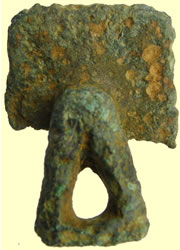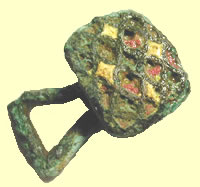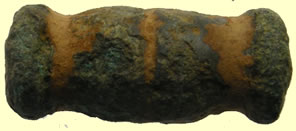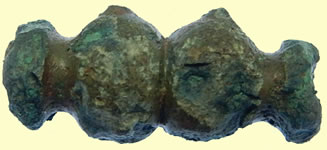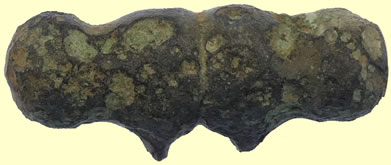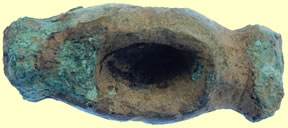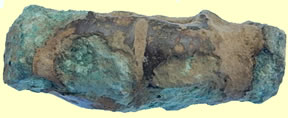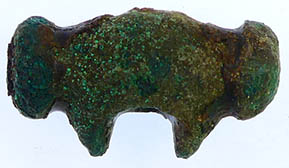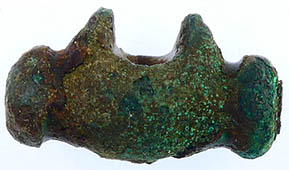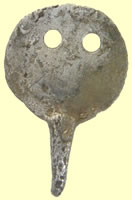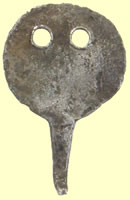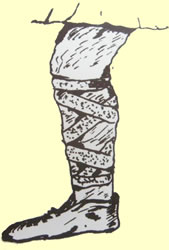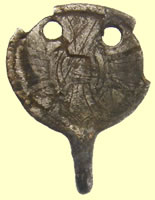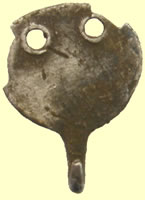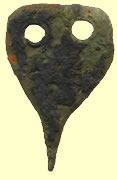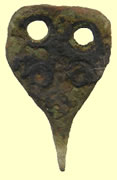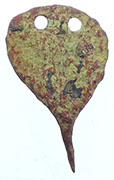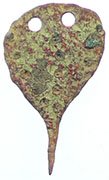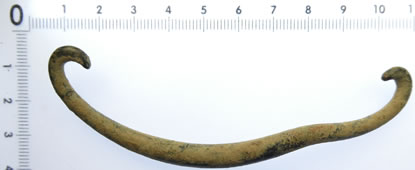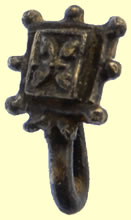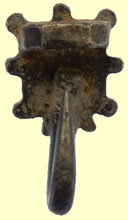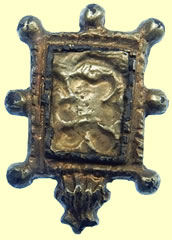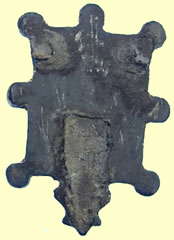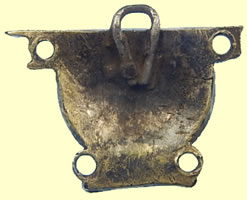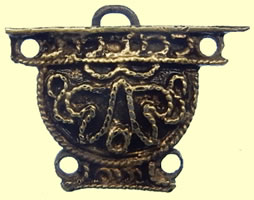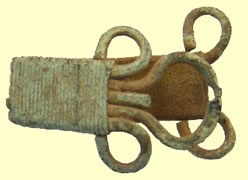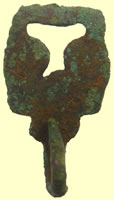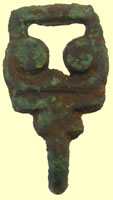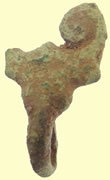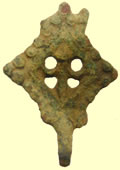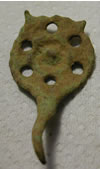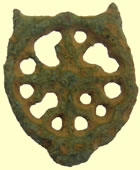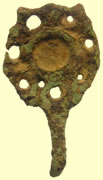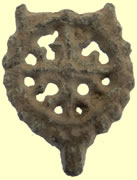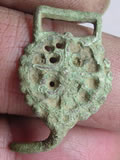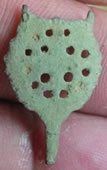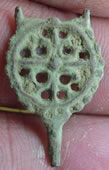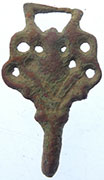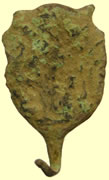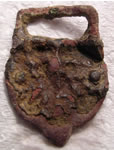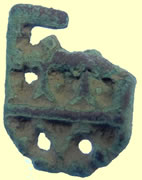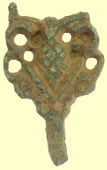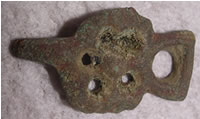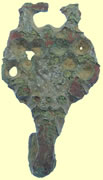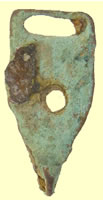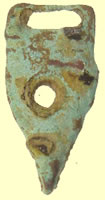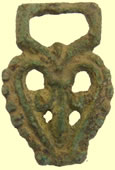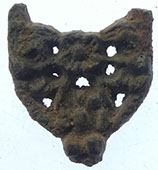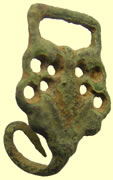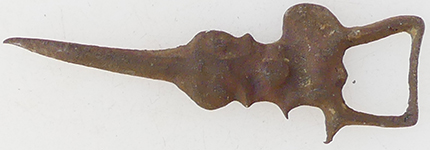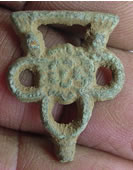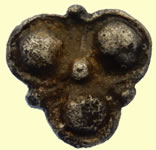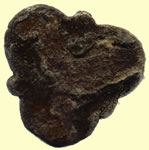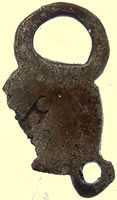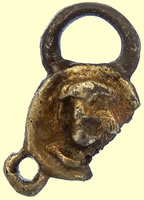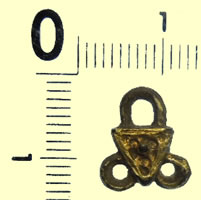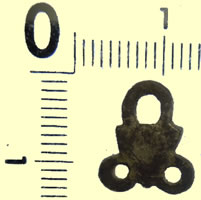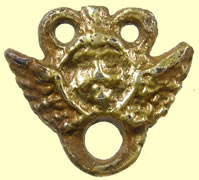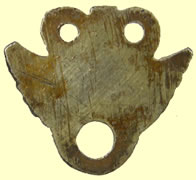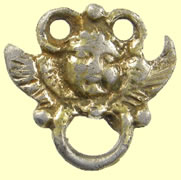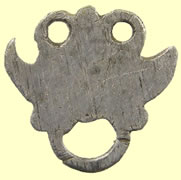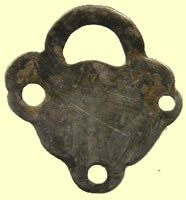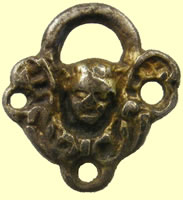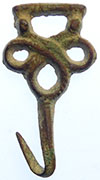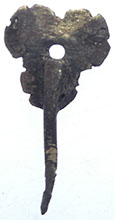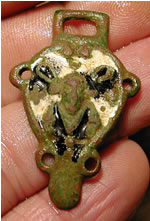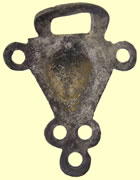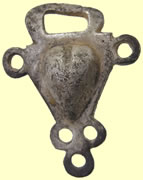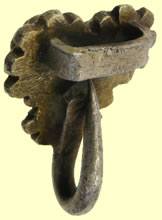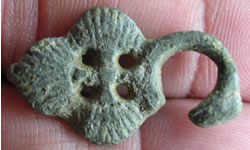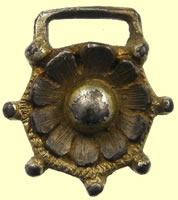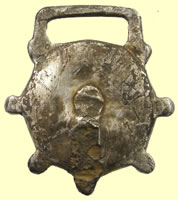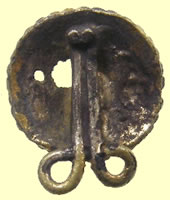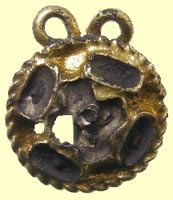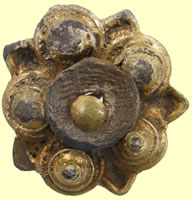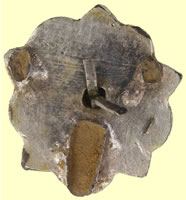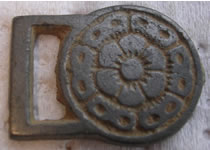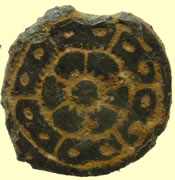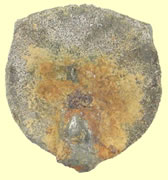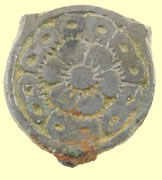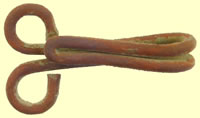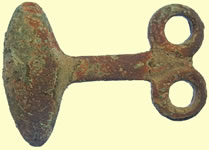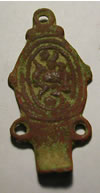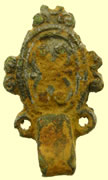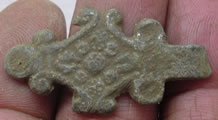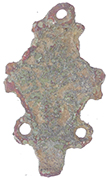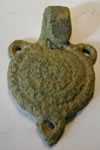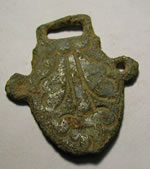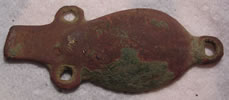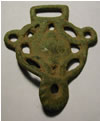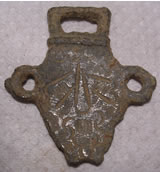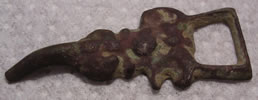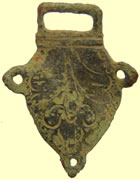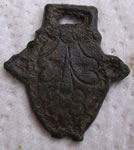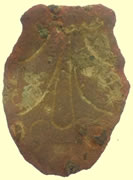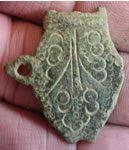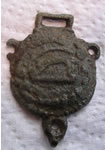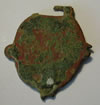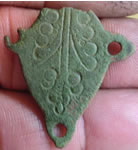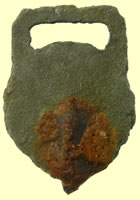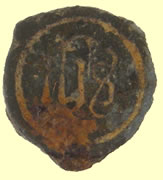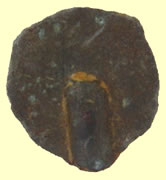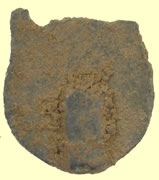

Metal detecting holidays in England with the World's most successful metal detecting club.20 years plus.
Twinned with Midwest Historical Research Society USA.
|
Clothing and dress fasteners Hook fasteners seemed to have disappeared from about the time of the Norman Conquest. However they resurfaced in the 15thC and reached their height to popularity in the 16thC. The hook and eye design has continued right up to present day.
|
Celtic and Roman fasteners |
||
|
||
Stunning find - Celtic dragon headed toggle clothing fastener - 42.55mm L x 36.99mm H 27.37g
1stC AD Celtic enameled clothing fastener
Dress toggle - 1st/2nd century AD- Romano British a variant 29 Hattatt.
British Celtic 'Pierced Bulb' Toggle Fastener Circa 1st century BC-1st century AD. A cast fitting in the form of a pierced bulb with medial indent extending to a thick, round-section discoid terminal. Such fittings were used as toggles to fasten garments, passing through a slit or loop. Reference: cf. looped variants in Murawski, P. Benet's Artefacts of England and the United Kingdom |
||
Early medieval Class A Type 2Circular
|
||
Early medieval Class M Double sharp hooked clasp |
||
|
||
Late medieval Class A Type 1 Double sharp hooked clasp |
||
|
||
Early Post medieval Class D Type 1RectangularGilded silver |
||
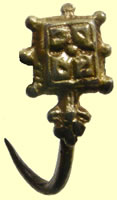 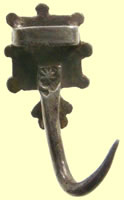 |
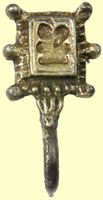  |
|
|
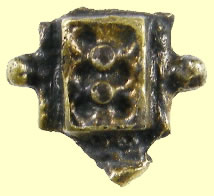 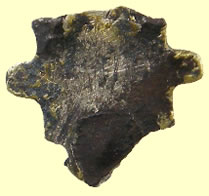 |
|
 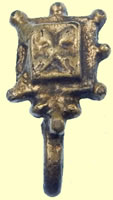 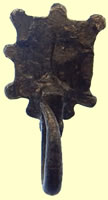 |
|
|
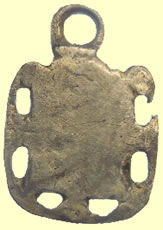 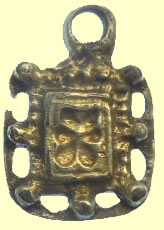 |
|
|
 |
|
|
Early Post medieval Class B Type 3Triangular
|
||
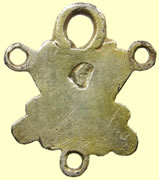 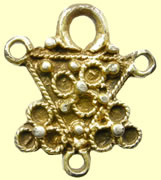 |
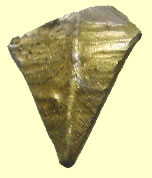 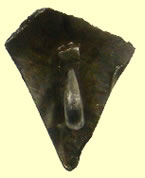 |
|
Early Post medieval Class B Type 2Circular |
||
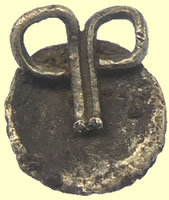 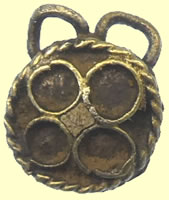 |
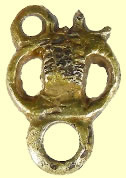 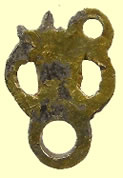 |
|
|
||
Early Post medieval Class C Type 3wire single sharp hooked clasp |
||
|
||
Early Post medieval Class E Type 1Rectangular |
||
|
||
Early Post medieval Class E Type 3Circular/Sub circular |
||
|
||
Early Post medieval Class E Type 2Shield shaped |
||
|
||
Early Post medieval Class E Type 5Trefoil |
||
|
||
Early Post medieval Class E Type 6Quatrefoil |
||
 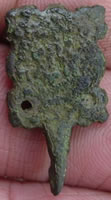 |
||
Early Post medieval Class E Type 7Heart-shaped |
||
|
||
Early Post medieval Class E Type 8Figurative |
||
 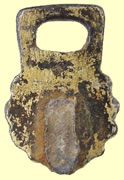 |
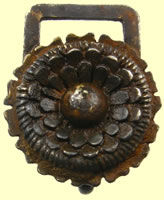 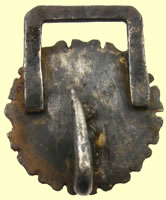 |
|
|
||
Early Post medieval Class K Type 2Circular |
||
|
||
Early Post medieval Class K Type 4Heart shaped |
||
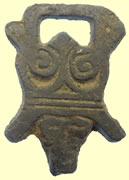   |
||
Early Post medieval Class A Type 1 and toggles |
||
|
||
Early Post medieval Class A Type 7 |
||
      |
||
Early Post medieval Class A Type 8 |
||
 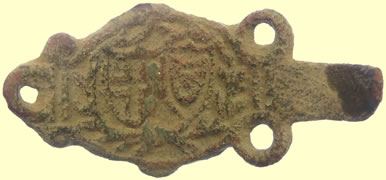  |
||
Early Post medieval Class A Type 10 |
||
|
||
17th C clothing fastenersEarly Post medieval Class A Type 2 |
||
|
||
Early Post medieval Class K Type 2Circular
|
16thC Tudor clothing fastener with religious inscription
IHS: dating from the 8th c., this is an abbreviation for "IHESUS," the way Christ's Name was spelled in the Middle Ages (despite popular belief, the monogram stands neither for "Iesus Hominum Salvator" --"Jesus Saviour of Men" -- nor for "In His Service.") Popularized by St. Bernardine of Siena, the monogram was later used by St. Ignatius of Loyola as a symbol for the Jesuit Order. The IHS monogram is an abbreviation or shortening of Jesus' name in Greek to the first three letters. Thus ΙΗΣΟΥΣ, ιησυς (iēsus, "Jesus"), is shortened to ΙΗΣ (iota-eta-sigma), sometimes transliterated into Latin or English characters as IHS or ΙΗC. The symbol is said to appear rarely in the catacombs, only in the catacomb of Priscilla and the atrium of the Capella Gr�ca (Greek Chapel).1 It was popularized in the fifteenth century, however, by Franciscan disciple Bernadine of Sienna as a symbol of peace. In 1541 St. Ignatius Loyola adopted the symbol with three nails below and surrounded by the sun as the seal of the Jesuit order. Contrary to some authors, the monogram originally stood for neither for Iesus Hominum Salvator ("Jesus Savior of Men") nor for "In His Service." Some attribute its origin to Constantine's vision, where he saw a cross with the inscription "In hoc signo vinces" ("in this sign you shall conquer,"2 which is abbreviated, according to them, as IHS. However, this seems to require a stretch, as do claims that it is really a pagan symbol. The simplest explanation, as an abbreviation of Jesus' name, is best. |
|
Unknown |
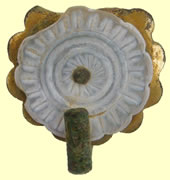 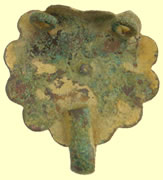 |
| ?? |

